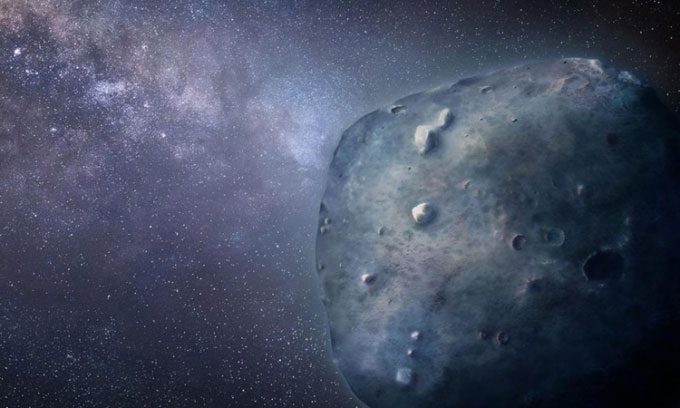The asteroid Phaethon has a distinctive blue color likely due to its close proximity to the Sun, where it is heated to temperatures of 800 degrees Celsius.
The unusual blue hue of asteroid Phaethon has puzzled scientists since its discovery in the early 1980s. According to new research published in the journal Icarus, its unique orbit may be responsible for this strange coloration, Space reported on June 16.

Asteroid Phaethon has a distinctive blue color. (Photo: University of Arizona/Heather Roper)
Phaethon orbits the Sun in an elliptical trajectory. This orbit brings it closer to the Sun than any other recorded asteroid. This close approach occurs for a very brief period, after which Phaethon retreats beyond the orbit of Mars, but the intensity of sunlight it encounters during these flybys is sufficient to gradually strip away the red chemical compounds on its surface. These are the same compounds that astronomers observe on asteroids located farther from the Sun.
During its close approaches to the Sun, Phaethon comes within about 21 million kilometers of the star, which is nearly three times closer than Mercury, the innermost planet in the Solar System. As Phaethon glides past the Sun, its surface heats up to 800 degrees Celsius. The new study suggests that this heat triggers a series of chemical reactions that cause iron-rich materials and red organic compounds to vaporize.
“Essentially, the surface of the asteroid is losing its red color. Some of the red materials reaccumulate as Phaethon moves away from Mars, but they are lost again when Phaethon approaches the Sun. After thousands of orbits, this asteroid is left with materials that reflect darker, cooler colors,” explained Carey Lisse, a senior planetary scientist at the Johns Hopkins University Applied Physics Laboratory and the lead author of the study.
Scientists have modeled the chemical composition of Phaethon’s surface in detail and calculated what happens to these chemicals as the temperature of the asteroid changes along its orbit. They noted that there are only a few dozen blue asteroids in the Solar System, with Phaethon being the bluest among them. Interestingly, some comets that approach the Sun also exhibit a distinct blue hue.
“This type of orbit needs to develop over a very long time, but that’s exactly what we need: a process that requires the object to be very ‘old’ and thermally evolved,” said Jordan Steckloff, a planetary scientist at the Planetary Science Institute and a co-author of the study.
Additionally, heating carbon into soot at high temperatures near the Sun may also contribute to Phaethon’s characteristic blue color, according to Lisse. Scientists may learn more about this mysterious asteroid in the coming years when the Japan Aerospace Exploration Agency (JAXA) launches a spacecraft named DESTINY+ to study Phaethon.





















































